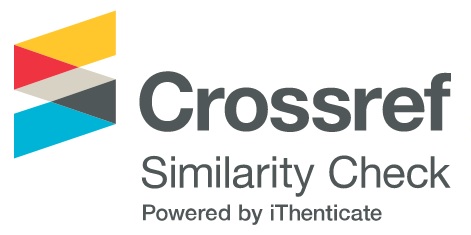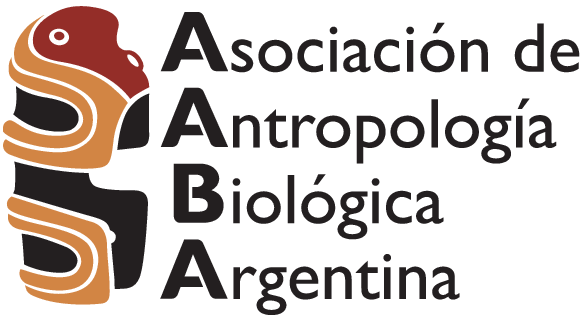Correlación y concordancia entre índice de masa corporal y grasa corporal en adolescentes residentes a distintos niveles altitudinales
DOI:
https://doi.org/10.24215/18536387e048Palavras-chave:
estado nutricional, adiposidad, altitudResumo
Objetivo: evaluar la adiposidad por antropometría y bioimpedancia (Bio), y contrastar los resultados con el Índice de Masa Corporal (IMC), de adolescentes residentes en distintas altitudes en Jujuy, Argentina. Métodos: Se realizó un estudio observacional, transversal, descriptivo, en 540 adolescentes (218 varones; 322 mujeres), de escuelas públicas ubicadas a diferentes altitudes en Jujuy, Argentina. Se midió peso, talla y pliegues subcutáneos. Se calculó IMC y se evaluó la adiposidad con bioimpedancia y dos fórmulas (Siri y Slaughter). Los datos se agruparon por género, edad (10-14; 15-18 años) y región de residencia según altitud (tierras altas: mayores o iguales a 2000 msnm; tierras bajas: menores a 2000 msnm). Se analizó la correlación entre IMC y la adiposidad obtenida con distintos métodos, y la concordancia de dichas variables categorizadas. Resultados: Independientemente de la región y el género, con los tres métodos el IMC y la adiposidad mostraron correlaciones significativas: considerables en varones (rho entre 0,553-0,738) y en mujeres de tierras altas, con Slaughter (rho entre 0,553-0,752); muy fuertes en mujeres en tierras bajas, con los tres métodos, y de tierras altas, con bioimpedancia y Siri (rho entre 0,785-0,873). En ambos géneros y regiones, las concordancias entre el estado nutricional (IMC) y la adiposidad evaluada con los tres métodos fueron en general bajas (k entre 0,047-0,510) y significativas. Conclusión: El IMC sería un buen indicador para screening nutricional a nivel poblacional, independientemente de la altitud del lugar de residencia. Sin embargo,a nivel individual sería necesario complementarlo con métodos de valoración de adiposidad.
Downloads
Métricas
Referências
Barrera, M. A. M. (2014) Uso de la correlación de Spearman en un estudio de intervención en fisioterapia. Movimiento científico, 8(1), 98-104.
Basset, M., Giménez, M., Romaguera, D. y Sammán, N. (2013) Nutritional status and food intake of populations in high altitude regions of Northeast Argentina. Arch. Latinoam. Nutr., 63(2),114-24. http://hdl.handle.net/11336/22545
Bauce, G. J. (2018). Estudio comparativo del porcentaje de grasa corporal en niños y adolescentes de tres ciudades de Venezuela: 2008-2010. Revista del Instituto Nacional de Higiene “Rafael Rangel”, 49(2), 24.
Bejarano, I. F., Aparicio, M. E., Peñaranda, N. V., Bejarano, G. E., Bejarano, M. G., y Zapana, J. (2019). Nutrición y altura geográfica en poblaciones infanto juveniles de la provincia de Jujuy. Revista Nuevas Propuestas, 54, 58-87.
Bejarano, I. F., Dipierri, J., Alfaro, E., Quispe, Y. y Cabrera, G. (2005) Evolution of the prevalence of overweight, obesity and malnutrition in schoolchildren in San Salvador de Jujuy. Arch. Argent. Pediatr., 103(2), 101-9.
Brook, C. (1971) Determination of body composition of children form skinfold measurements. Arch. Dis. Child., 46, 182-4.
Busch, A. S., Højgaard, B., Hagen, C. P., y Teilmann, G. (2020). Obesity is associated with earlier pubertal onset in boys. The Journal of Clinical Endocrinology & Metabolism, 105(4), e1667-e1672.
Butte N. F., Garza C., y de Onis M. (2007) Evaluation of the feasibility of international growth standards for school-aged children and adolescents. J. Nutr., 137(1), 153-7
Chung, S. (2018). Body composition analysis and references in children: clinical usefulness and limitations. European Journal of Clinical Nutrition, 73, 236-242. https://doi.org/ 10.1038/s41430-018-0322-8
Cossio-Bolaños, M. A., Pablos Abella, C. y Arruda, M. (2012) Valoración de la adiposidad corporal de escolares en Arequipa, Perú. Rev. Peru Med. Exp. Salud Publica, 29(4), 477-82.
de Onis, M., Onyango, A.W., Borghi, E., Siyam, A., Nishida, C. y Siekmann, J. (2007) Development of a WHO growth reference for school-aged children and adolescents. Bulletin of the World Health Organization, 85(9), 660-7. https://doi.org/ 10.2471/BLT.07.043497
Deurenberg P., Deurenberg-Yap M., y Guricci S. (2002) Asians are different from Caucasians and from each other in their body mass index/body fat per cent relationship. Obes. Rev., 3(3), 141-6. https://doi.org/10.1046j.1467-789x.2002.00065.x
Dipierri, J. E., Bejarano, I. F., Alfaro Gómez, E. L., Cabrera, G., Moreno Romero, S., Tanuz, M. H. y Marrodán, M. D. (2008) Prevalence of overweight and obesity in high altitude populations in the province of Jujuy (Argentina). En: J. L. Nieto Amada, J. A. Obón Nogués y S. Baena Pinilla (Eds.), Genes, Environment and Diseases in Human Populations. Prensas Universitarias de Zaragoza.
Dipierri, J. E., Ocampo, S. B. Olguín, M. E. y Suárez, D. (1992) Weight at birth and height in the Province of Jujuy. Cuadernos FHYCS-UNJU, 3, 156-66.
Durán-Agüero, S., Beyzaga-Medel, C. y Miranda-Durán, M. (2016) Comparison in self-perception of body image in university students evaluated according to Body Mass Index and percentage of fat. Rev. Esp. Nutr. Hum. Diet, 20(3), 180-9. https://doi.org/10.14306/renhyd.20.3.209
Durnin, J. y Rahaman, M. (1967) The assessment of the amount of fat in the human body from measurement of skinfold thickness. Br. J. Nutr., 21(3), 681-9. https://doi.org/10.1079/bjn19670070
Fariñas-Rodríguez, L., Vázquez-Sánchez, V., Martínez-Fuentes, A. J., Carmenate-Moreno M. M. y Marrodán, M. D. (2012) Evaluation of the nutritional status of Cuban and Spanish schoolchildren: body mass index versus fat percentage. Nutr. Clín. Diet Hosp., 32(2), 58-64.
Federico, B., D’Aliesio, F., Pane, F., Capelli, G. y Rodio, A. (2011) Body mass index has a curvilinear relationship with the percentage of body fat among children. BMC Res. Notes, 4, 301. https://doi.org/10.1186/1756-0500-4-301
Fondo de las Naciones Unidas para la Infancia (UNICEF) (2017). Para cada adolescente una oportunidad. Posicionamiento sobre adolescencia. Argentina. https://observatoriosocial.unlam.edu.ar/descargas/6_UNICEF.pdf
Freedman, D. S., Ogden, C. L. y Kit, B. K. (2015) Interrelationships between BMI, skinfold thicknesses, percent body fat, and cardiovascular disease risk factors among US children and adolescents. BMC Pediatr., 15, 188. https://doi.org/10.1186/s12887-015-0493-6
Freedman, D. S., Wang, J., Maynard, L. M., Thornton, J. C., Mei, Z., Pierson, Jr. R. N., Dietz, W. H. y Horlick, M. (2005) Relation of BMI to fat and fat-free mass among children and adolescents. Int. J. Obes., 29, 1-8.
Garrido Chamorro, R. P., Garnés Ros, A. F., y González Lorenzo, M. (2005). Índex de massa corporal i percentatje de greix en esportistes. Apunts Medicina de l" Esport, 39(148), 5-14.
Grandi, C., Dipierri, J. E., Luchtenberg, G., Moresco, A., y Alfaro Gómez, E. L. (2013). Efecto de la altitud sobre el peso al nacer y eventos perinatales adversos en dos poblaciones argentinas. Revista de la Facultad de Ciencias Médicas, 70(2), 55-62
International Society for the Advancement of Kinanthropometry (ISAK). (2005) Normas Internacionales para la Valoración Antropométrica. https://antrofor.files.wordpress.com/2020/02/manual-isak-2005-cineantropometria-castellano1.pdf
Javed, A., Jumean, M., Murad, M. H., Okorodudu, D., Kumar, S., Somers, V. K., Sochor, O. y Lopez-Jimenez, F. (2015) Diagnostic performance of body mass index to identify obesity as defined by body adiposity in children and adolescents: a systematic review and meta-analysis. Pediatr Obes, 10(3), 234-44. https://doi.org/10.1111/ijpo.242
Lambert, B. S., Oliver, J. M., Katts, G. R., Green, J. S., Martin, S. E. y Crouse, S. F. (2012) DEXA or BMI: clinical considerations for evaluating obesity in collegiate division I-A American Football Athletes. Clin. J. Sport Med., 22(5), 436–8. https://doi.org/10.1097/JSM.0b013e31825d5d65
Landis, J. y Koch, G. (1977) The measurement of observer agreement for categorical data. Biometrics, 33, 159-74.
Lang, P. O., Trivalle, C., Vogel, T., Proust, J. y Papazian, J. P. (2015) Markers of metabolic and cardiovascular health in adults: Comparative analysis of DEXA-based body composition components and BMI categories. J. Cardiol., 65(1), 42-9. https://doi.org/10.1016/j.jjcc.2014.03.010
Lee, J. M., Wasserman, R., Kaciroti, N., Gebremariam, A., Steffes, J., Dowshen, S., Steffes, J., Dowshen, S., Harris, D., Serwint, J., Abney, D., Smitherman, L., Reiter, E., y Herman-Giddens, M. E. (2016). Timing of puberty in overweight versus obese boys. Pediatrics, 137(2).
Lindsay, R. S., Hanson, R. L., Roumain, J., Ravussin, E., Knowler, W. C. y Tataranni, P. A. (2001) Body mass index as a measure of adiposity un children and adolescents: relationship to adiposity by dual energy X-ray absorptiometry and to cardiovascular risk factors. J. Clin. Endocrinol. Metab., 86(9), 4061-7. https://doi.org/10.1210/jcem.86.9.7760
Lizana Arce, P. J., Almagiá Flores, A. A., Simpson Lelievre, M. C., Olivares Barraza, R., Binvignat Gutiérrez, O., Ivanovic Marincovich, D., y Berral de la Rosa, F. J. (2011) Inconsistency between the body fat percentages estimated through anthropometric measurements and manual bioimpedance in children and adolescents. Int. J. Morphol., 29(4), 1364-9. https://doi.org/10.4067/S0717-95022011000400049
Lomaglio, D. B. (2010) Evolution of height and nutritional status in school children between 1997 and 2010 in Antofagasta de la Sierra, Catamarca, Puna Argentina. High Altitude Medicine & Biology, 11(3), 272.
Low S., Chin M. C., Ma S., Heng D., y Deurenberg-Yap M. (2009). Rationale for redefining obesity in Asians. Ann. Acad. Med. Singap., 38(1), 66-9.
Lozano Berges, G., Matute Llorente, A., Gómez Bruton, A., González Agüero, A., Vicente Rodríguez, G. y Casajús, J. A. (2017) Body fat percentage comparisons between four methods in young football players: are they comparable? Nutr. Hosp., 34(5), 1119-24. https://doi.org/10.20960/nh.760
Marrodán Serrano, M. D., Mesa Santurino, M. S., Alba Díaz, J. A., Ambrosio Soblechero, B., Barrio Caballero, P. A., Drak Hernández, L., Gallardo Yepes, M., Lermo Castelara, J., Rosa Rosa, J. M. y González-Montero de Espinosa, M. (2006) Diagnosis of obesity: update of criteria and their clinical and population validity. An. Pediatr. (Barc), 65(1), 5-14.
Marrodán Serrano, M. D., Santos Beneit, M. G., Mesa Santurino, M. S., Cabañas Armesilla, M. D., González-Montero de Espinosa, M. y Pacheco del Cerro, J. L. (2007) Analytical techniques in the study of body composition. Anthropometry versus bipolar and tetrapolar bioimpedance systems. Nutr. Clín. Diet. Hosp., 27(1), 11-9.
Martínez, J. I., Dipierri, J. E., Bejarano, I. F., Quispe, Y., y Alfaro Gómez, E. L. (2018) Variation of body fat mass by anthropometry and bioimpedance in Jujuy schoolchildren. Rev. Arg. Antrop. Biol., 20(1), 1-8. https://doi.org/10.17139/raab.2018.0020.01.05
Mejia, C. R., Cáceres, O. J., Rodriguez Alarcon, J. F., y Corrales-Reyes, I. E. (2020). Variaciones fisiológicas y antropométricas en trabajadores según su residencia en tres altitudes geográficas del Perú. Revista Cubana de Investigaciones Biomédicas, 39(3), e611
Mesa, M. S., Marrodán, M. D., Lomaglio, D. B., López-Ejeda, N., Moreno-Romero, S., Bejarano, I. F., Dipierri, J. E., y Pacheco, J. L. (2013) Anthropometric parameters in screening for excess of adiposity in Argentinian and Spanish adolescents: evaluation using receiver operating characteristic (ROC) methodology. Ann. Hum. Biol., 40, 196-405. https://doi.org/10.3109/03014460.2013.788210
Metcalf S. B., Hosking J., Frémeaux A. E., Jeffery A. N. et al. (2011) BMI was right all along: taller children really are fatter (implications of making childhood BMI independent of height) EarlyBird 48. Int. J. Obes., 35, 541-547.
Meyer, E., Carrillo, R., Román, E. M., Bejarano, I. F., Alfaro, E. L. y Dipierri, J. E. (2013) Prevalence of overweight and obesity in Jujuy schoolchildren of different altitude levels according to the IOTF, CDC and WHO references. Arch. Argent. Padiatr., 111(6), 516-22. https://doi.org/10.5546/aap.2013.516
Moreno, M. V., Gómez Gandoy, J. B. y Antoranz González, M. J. (2001) Measurement of body fat using bioelectric impedance, skin folds and equations from anthropometric measurements. Comparative analysis. Rev. Esp. Salud Pública, 75(3), 221-36.
Nwizu, S. E., Njokanma, O. F., Okoromah, C. A. y David, N. A. (2011) Relationship between bioelectrical impedanceanalysis and body mass index in adolescent urban Nigerians. West Afr. J. Med., 30(2), 99-103.
Orta Duarte, M., Flores Ruelas, Y., López-Alcaraz, F., del Toro-Equihua, M. y Sánchez-Ramirez, C. (2014) Correlation between percentage of body fat measured by the Slaughter equation and bio impedance analysis technique in Mexican schoolchildren. Nutr. Hosp., 29(1), 88-93. https://doi.org/10.3305/nh.2014.29.1.6992
Organización Mundial de la Salud (WHO) (2020) Obesity and overweight. https://www.who.int/newsroom/fact-sheets/detail/obesity-and-overweight
Organización Mundial de la Salud (OMS) (2021). BMI-for-age (5-19 years) Interpretation of cut-offs. https://www.who.int/tools/growth-reference-data-for-5to19-years/indicators/bmi-for-age
Padilla, J. (2014) Relationship of body mass index and body fat percentage of young Venezuelans. Rev. Ib CC Act. Fis. Dep., 3(1), 27-33.
Popkin, B. M. (1993). Nutritional patterns and transitions. Popul. Dev. Rev., 19(1), 138-157.
Román, E. M., Bejarano, I. F., Alfaro, E. L., Abdo, G. y Dipierri, J. E. (2015) Geographical altitude, size, mass and body surface area in children (1–4 years) in the Province of Jujuy (Argentina). Annals of Human Biology, 42(5), 431-8. https://doi.org/10.3109/03014460.2014.959998
San Miguel Simbrón, J. L. (2017). El timo y el estado nutricional en niños preescolares residentes de gran altitud. Cuadernos Hospital de Clínicas, 58(2), 20-27.
Santolaya, B. R., Araya, C. J., y Prieto, P. R. (1984). Capacidad vital, talla, peso y superficie corporal en dos poblaciones adultas sanas, residentes de altura del Norte Grande de Chile: 98 nativos del bofedal de isluga (altura promedio 3.800 mts) y 351 residentes del campamento cuprifero de Chuquicamata (2.800 mts). Estudios Atacameños, 7, 382-398.
Seo, Y. G., Kim, J. H., Kim, Y., Lim, H., Ju, Y. S., Kang, M. J., Lee, K., Jang, H. B., Park, S. I. y Park, K. H. (2018). Validation of body composition using bioelectrical impedance analysis in children according to the degree of obesity. Scandinavian journal of medicine & science in sports, 28(10), 2207-2215.
Siri, W. E. (1961) Body composition from fluid spaces and density: analysis of methods. En: J. Brozeck y A. Henschel (Eds.), Techniques for Measuring Body Composition. National Academy of Sciences-Natural Resourcer Council.
Slaughter, M. H., Lohman, T. G., Boileau, R. A., Horswill, C. A., Stillman, R. J., van Loan, M. D. y Bemben, D. A. (1988) Skinfold equations for estimation of body fatness in children and youth. Hum. Biol. 60(5), 709-23.
Sørensen, K., Aksglaede, L., Petersen, J. H., y Juul, A. (2010). Recent changes in pubertal timing in healthy Danish boys: associations with body mass index. The Journal of Clinical Endocrinology & Metabolism, 95(1), 263-270.
The Institute for Altitude Medicine (2021). http://www.altitudemedicine.org/altitude-illness.
Toselli S., Tarazona-Santos E., y Pettener D. (2001) Body size, composition, and blood pressure of highaltitude Quechua from the Peruvian Central Andes (Huancavelica, 3,680 m). Am. J. Hum. Biol., 13(4), 539-47. https://doi.org/10.1002/ajhb.1086
Villouta, P. L., Correia-de-Campos, L. F. C., Paredes-Arias, M., Vargas-Vitoria, R., Martínez-Salazar, C., y Araneda-Garces, N. (2021). Caracterización Antropométrica y Composición Corporal de Tenistas de Elite Varones y Damas de Chile. International Journal of Morphology, 39(1), 84-89.
Ward, M. P., Milledge, J. S. y West, J. B. (2002) High Altitude Medicine and Physiology. Arnold.
Zhao, D., Li, Y., Zheng, L. y Yo, K. (2013) Brief communication: body mass index, body adiposity index, and percent body fat in Asians. Am. J. Phys. Anthropol., 152(2), 294-299. https://doi.org/10.1002/ajpa.22341
Downloads
Publicado
Como Citar
Edição
Seção
Licença
O RAAB é um periódico de acesso aberto do tipo diamante. Não há cobrança pela leitura, envio ou processamento da obra. Da mesma forma, os autores mantêm os direitos autorais de suas obras, bem como os direitos de publicação sem restrições.

- Citations
- Citation Indexes: 3
- Usage
- Full Text Views: 129
- Abstract Views: 11
- Captures
- Readers: 31



























